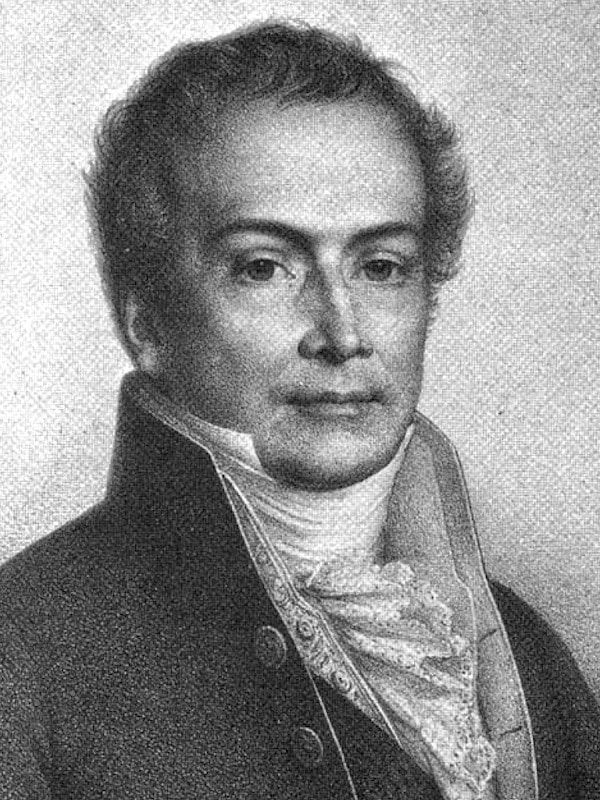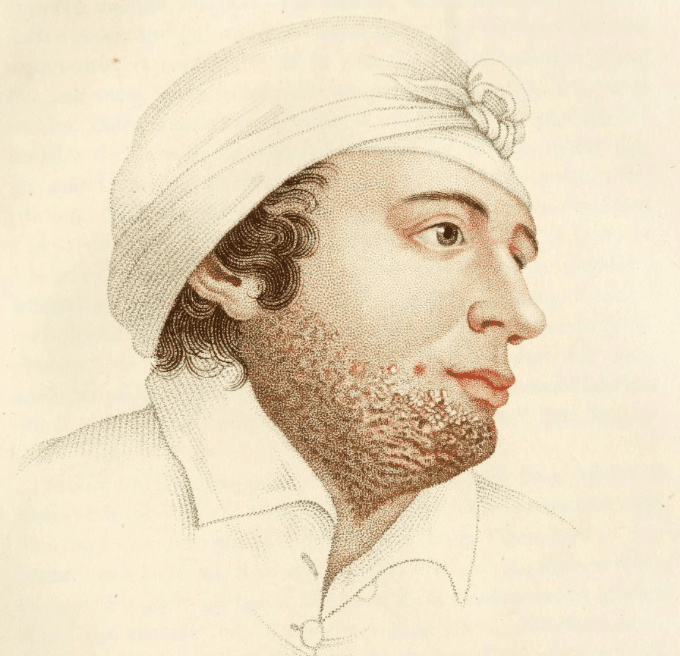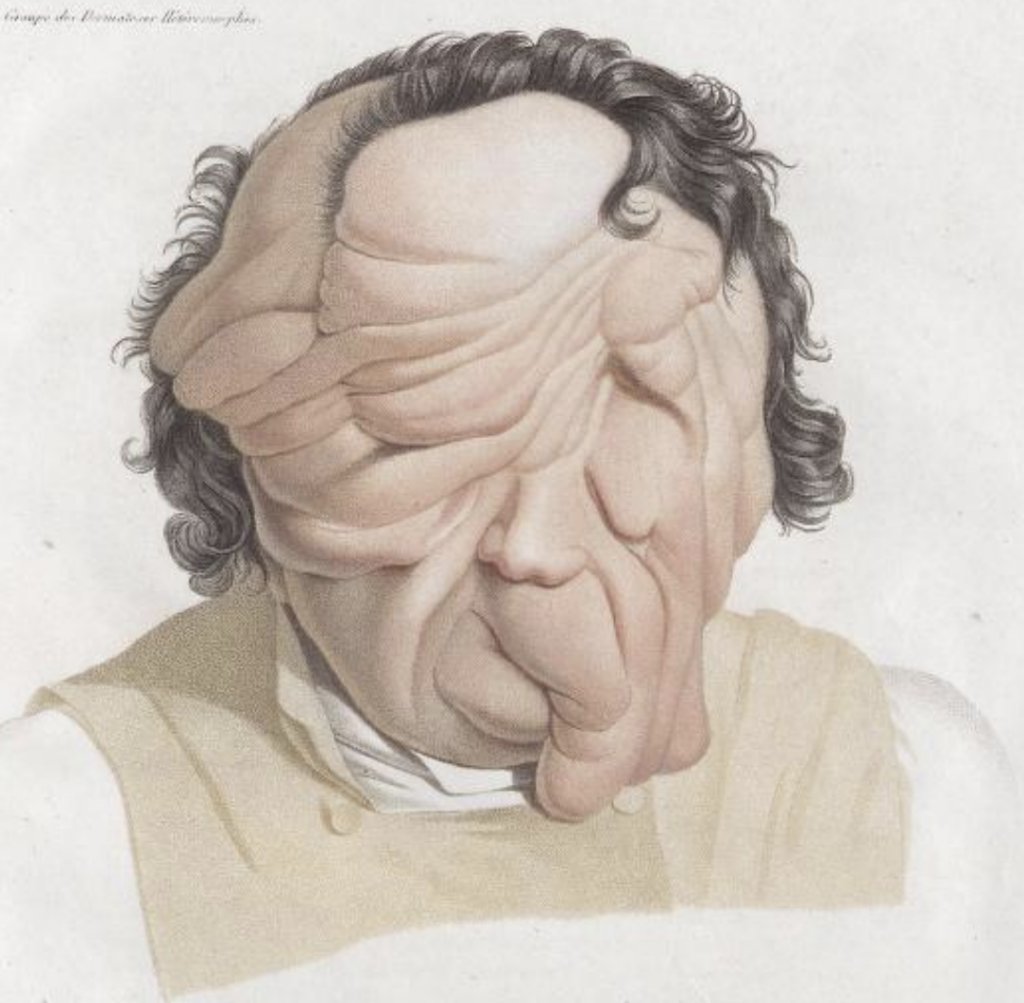Jean-Louis Alibert

Baron Jean-Louis-Marc Alibert (1768-1837) was a French dermatologist.
Physician to Louis XVIII, of France. As chief physician de l’hôpital Saint-Louis, he devoted himself especially to a study of diseases of the skin, and is often referred to as the founder of French dermatology.
Alibert’s clinics were theatrical productions; he held forth in the garden of Saint Louis under the lime trees. He presented the skin diseases in paintings
hanging from the trees while each presenting a patient wearing a placard with the diagnosis across the chest.
His chief works include Clinique de l’hôpital Saint-Louis and Monographie des dermatoses. His description des maladies de la peau observées à l’Hôpital Saint-Louis (1806-1814), contains splendid colour engravings. The inclusion of images was fundamental. These not only reflect the dermatological condition, but the expression of the individual affected.
In 1806, Alibert offered the first description mycosis fungoides. In 1810 he wrote about the “chelloides” (Alibert’s keloids). He also described syphilide, dermatosis and dermatolysis.
Alibert classified skin diseases in the Tree of Dermatoses, a nosologie naturelle. He classified the dermatoses – a term coined by him – according to their outer appearance, dividing them in branches as families, generations and species. Alibert’s classification was impractical and abandoned, replaced by the classification of Robert Willan (1757-1812) based on the morphology of the essential lesion.
Biography
- Born on May 2, 1768 in Villefranche-de-Rouergue, France; son of Pierre Alibert, counsellor of the “présidial de Villefranche”, and Claudine Alric
- 1790 – Studied in the schools of Congrégation des Pères de la doctrine chrétienne inclined towards the priesthood, but in 1792 the revolutionary movement suppressed all religious orders and congregations
- 1795 – Enrolled in the École Normale which opened on January 20, but dissolved on May 19…
- 1796 – Commenced medical studies at l’École de Santé the newly formed Parisian Anatomo-Clinical School. Surgery and medicine were unified and students taught in hospitals with additional education including pharmacy, chemistry, physics and natural history. One of the founders and general secretary of the Societé médicale d’émulation in 1798
- 1799 – Thesis: Dissertation sur les fièvres pernicieuses ou ataxiques intermittentes under the founder of modern psychiatry Philippe Pinel (1745-1826)
- 1801 – Adjunct physician at l’hôpital Saint-Louis (then called Hospice du Nord) where patients with ulcers, scurvy, scrofula and leprosy abounded; he dedicated himself to the study of dermatology becoming head of the department in 1803
- 1808 – Injected himself with the tumor tissue from a breast cancer patient along with several of his assistants. Following an initial inflammatory reaction at the injection site, Alibert noted no long-term consequences, and concluded that cancer was not a contagious disease
- 1815 – Physician to Louis XVIII
- 1824 – physician to Charles X
- 1827 – Made a Baron by Charles X; Membre de l’Académie nationale de médecine
- Died on November 4, 1837 from stomach cancer in Paris, France
Medical Eponyms
Alibert-Bazin syndrome (1825, 1858)
Alibert-Bazin syndrome or mycosis fungoides is the most common form of cutaneous peripheral T-cell lymphoma frequently also affecting the lymph nodes and viscera. Three stages exist; premycoid; infiltrative and tumour stages. Typical symptoms and signs include eczematoid eruption, psoriasis, dermatitis exfoliativa, and parapsoriasis; later circinate and gyrate elevated plaques of various sizes persist.
1806 – Alibert described mycosis fungoides naming the lesion initially pian fungoides because
of its similarity to yaws. Observing later the cutaneous tumors, Alibert reported its mushroom-like
appearance and used the term mycosis fungoides, realizing also that it was not caused by a fungus
1862 – Ernest Bazin (1807-1878) described the natural evolution of the disease and defined its stages integrated into the staging: patch, plaque and tumour.

1938 – Dermatologist Albert Sézary (1880-1956) and cardiologist Yves Bouvrain (1910-2002) reported the triad of erythroderma (l’homme rouge), enlarged peripheral lymph nodes and circulating mononuclear cells with convoluted nuclei, named Sézary syndrome
1975 – The term cutaneous T-cell lymphoma was coined when the cell of origin of mycosis fungoides and Sézary syndrome was determined to be skin-homing T cells
Alibert disease [Alibert keloid, False keloid] (1816)
In 1816 – Alibert provided the first accurate description of keloid, although it had been previously described by Noël Retz (1758-1810) in 1790.

Des principaux phénomènes que présentent les Cancroïdes. Alibert 1825
Les cancroïdes (Cancroïdes ou kéloïdes) sont des excroissances carniformes , tantôt ovalaires, tantôt oblongues, situées horizontalement sur une ou plusieurs parties des tégumens, d’une couleur rose pâle, parsemées de lignes blanchâtres et séparées les unes des autres, profondément adhérentes à la peau dont elles ne changent la couleur qu’à l’endroit élevé, imitant assez bien la fornie des cicatrices qui succèdent aux fortes brûlures, poussant quelquefois vers leurs bords de petits prolongemens bifurques, qui ont quelque rapport avec les pattes d’une écrevisse; ce qui justifie manifestement la dénomination que nous avons donnée à ces tumeurs extraordinaires.
The Cancroïdes (Cancroides or keloid) are carniform excrescences, sometimes oval, sometimes oblong, situated horizontally on one or several parts of the integument, pale rose in color, covered by whitish lines and separated one from another, deeply adherent to the skin, the color of which is altered only in the elevated area, imitating quite well the cicatricial forms that follow severe scalds, extending out from their borders at times small bifurcated prolongations which bear some resemblance to the claws of a crab, which fact clearly justifies the name we have given to these extraordinary tumors.
Thomas Addison (1793-1860) described two forms of keloid in 1849: ‘false keloid’ as described by Alibert; and ‘true keloid’ later termed morphea, or ‘Addison’s keloid‘.
Alibert mentagra [Dartre pustulose mentagre, Sycosis barbae] (1825)
Sycosis barbae is a chronic, recalcitrant folliculitis with inflammation of the surrounding skin area. Sycosis occurs in adult males and is most often precipitated by shaving trauma.
Alibert describes symptoms of pruritus and a burning sensation, followed by the emergence of painful small pustules each pierced by a hair. When chronic the lesions develop a crust and undergo granulomatous change.

Dermatolysis
DERMATOLYSIE.
Relâchement de la peau, cutis pendula, cutis pensilis, cutis lapsus , cutis rugositas, chalazodermie, etc. Affection caractérisée par une extension anormale de la peau , provenant d’une altération particulière dans la faculté contractile de cette enveloppe.
A. Dermatolysie palpébrale. Cette dermatolysie est très commune; nous l’avons observée sur un grand nombre d’individus, particulièrement sur une jeune fille de la campagne. Ses paupières supérieures s’allongèrent d’une manière prodigieuse, au point de couvrir les yeux et la partie supérieure des joues en totalité.
B. Dermatolysie faciale. Plusieurs physiologistes et pathologistes ont fait le voyage de Gisors pour aller voir un homme singulier, qui a présenté les phénomènesles plus extraordinaires.
C. Dermatolysie cervicale. Jean-Jacques Eloi. Sa maladie se manifesta chez lui vers l’âge de quatorze ans; elle commença vers l’oreille droite, et le volume de sa tumeur s’accrut insensiblement jusqu’au côté gauche; elle avait à peu près, la forme suivante: la peau, singulièrement relâchée et sillonnée, formait une sorte de triangle qui se propageait jusqu’au devant de la poitrine.
D. Dermatolysie ventrale. Une femme, âgée de soixante et quinze ans…les parois abdominales avaient éprouvé peu à peu un relâchement tel, que la plus grande partie des intestins se trouvait contenue dans la vaste poche qu’elles formaient.
E. Dermatolysie génitale.
DERMATOLYSIS.
Sagging skin, cutis pendula, cutis pensilis, cutis lapsus, cutis rugositas, chalazodermia, etc. Affection characterized by an abnormal extension of the skin, resulting from a particular alteration of the contractile function.
A. Eyelid dermatolysis. This dermatolysis is very common; we have observed it in a large number of individuals, particularly in a young country girl. Her upper eyelids lengthened prodigiously, to the point of covering the eyes and the upper part of the cheeks entirely.
B. Facial dermatolysis. Several physiologists and pathologists have traveled to Gisors to see a singular man, who presented the most extraordinary phenomena. See image below
C. Cervical dermatolysis. Jean-Jacques Eloi. His illness manifested itself in him around the age of fourteen; it began towards the right ear, and the volume of its tumor increased imperceptibly to the left side; it had approximately the following shape: the skin, singularly relaxed and furrowed, formed a kind of triangle which spread to the front of the chest.
D. Ventral dermatolysis. A woman, seventy-five years old…the abdominal walls had experienced such a relaxation little by little that the greater part of the intestines was contained in the vast pocket which they formed.
E. Genital dermatolysis.

Major Publications
- Alibert J-L. Traité des pertes de sang chez les femmes enceintes. [Volume II] 1800
- Alibert J-L. Dissertation sur les fièvres pernicieuses, ou ataxiques intermittentes. 1801 [3e 1804]
- Alibert J-L. Description des maladies de la peau observées à l’hôpital Saint-Louis, et exposition des meilleures méthodes suivies pour leur traitement. 1806 [Alibert-Bazin syndrome]
- Alibert J-L. Nouveaux élémens de thérapeutique et de matière médicale. [Tome II] 1814
- Alibert J. Note sur la kéloïde. Journal universel des sciences médicales, 1816; 2: 207-216 [Alibert disease, Alibert keloid]
- Alibert J-L. Nosologie naturelle ou les maladies du corps humain distribuées par famille. 1817
- Alibert J-L. Description des maladies de la peau. [Tome II] 1825 [Sycosis barbae Tome I: 201-203] [Pian fungoides Tome II: 161-164]
- Alibert J-L. Physiologie des passions: ou, Nouvelle doctrine des sentimens moraux. [Tome II] 1826
- Alibert J-L. Note sur la pyrophlyctide endémiqie ou pustul d’Alep. Revue médicale française et étrangère, 1829; 3: 62-68.
- Alibert J-L. Monographie des dermatoses, ou, Précis théorique et pratique des maladies de la peau. 1832 [Mycosis fungoides 600-602]
- Alibert J-L. Clinique de l’hôpital Saint-Louis ou traité complet des maladies de la peau. 1833
References
Biography
- Shelley WB, Crissey JT. Jean-Louis Alibert. In: Classics in Clinical Dermatology with Biographical Sketches. 2003: 24-34
- Karamanou M, Psaltopoulou T, Tsoucalas G, Androutsos G. Baron Jean-Louis Alibert (1768-1837) and the first description of mycosis fungoides. J BUON. 2014 Apr-Jun;19(2):585-8.
- Fresquet JL. Jean Louis Alibert (1768-1837). Historia de la Medicina
- Portrait: ALIBERT, Jean Louis (1768-1837). BIU Santé — Médecine
- Bibliography. Jean-Louis-Marc Alibert (1768 – 1837). World Cat Identities
Eponymous terms
- Addison T. On the keloid of Alibert, and on true keloid. Medico-Chirurgical Transactions, 1854; 37: 27-47.
- Bazin E. Leçons théoriques et cliniques sur les affections cutanées artificielles. 1862 [Alibert-Bazin syndrome 372-279]
- Auspitz H. Ein Fall von Granuloma fungoides (Mykosis fungoides Alibert). Vierteljahresschrift für Dermatologie und Syphilis. 1885, 17: 123-143.
[cite]
BSc, MD from University of Western Australia. Junior Doctor currently working at Sir Charles Gairdner Hospital.

